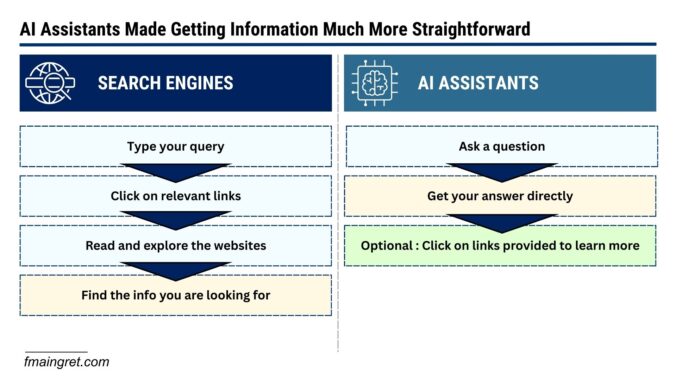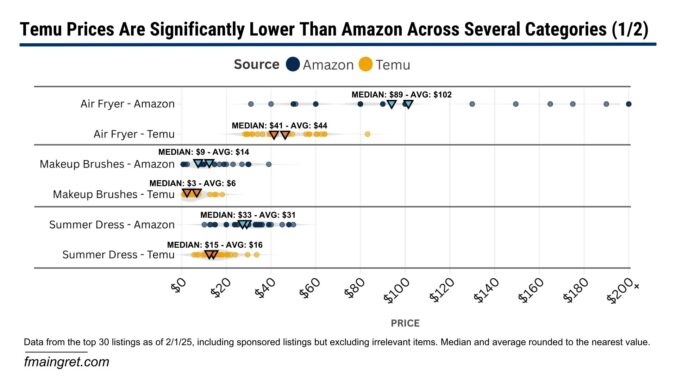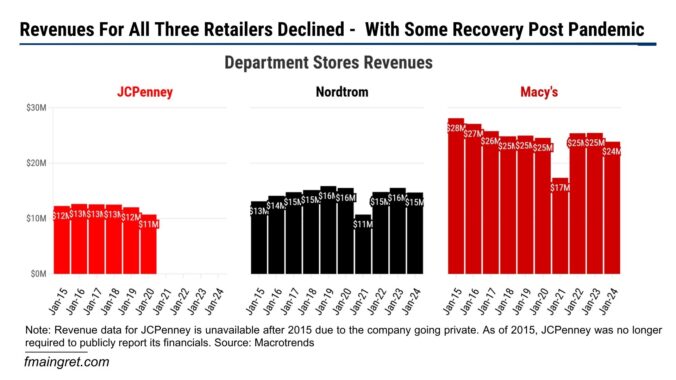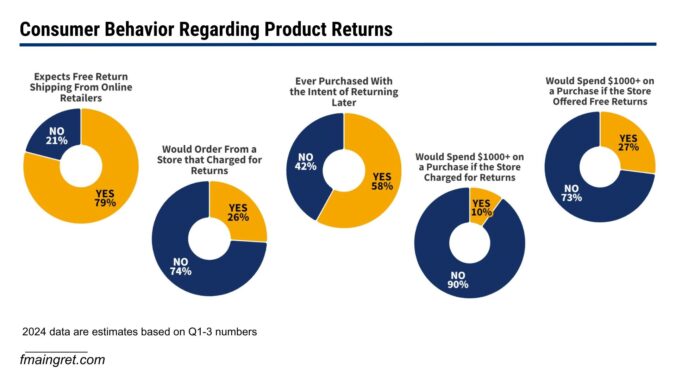It’s a rare day when I don’t see complaints about the fees Amazon and other platforms charge. And I understand, the cost of doing business online is becoming unsustainable for many SMBs.
Is the solution to emulate China’s e-commerce regulator and ask platforms to charge reasonable fees and better support small businesses?
Would that encourage people to start businesses and innovate, or would that create even more clutter on these marketplaces? Not to mention how complex this would be from a legal standpoint.
Ideally, we would be able to see new sales channels emerge, with more reasonable fees, that would allow SMBs to breathe. But network effects make it very difficult for new entrants to grow. And it looks like whenever a platform reaches a critical size (Amazon, Walmart, eBay…), it aligns its fee structure close to the ever-increasing industry standard. I am not saying there is price fixing among e-commerce giants, but this creates a very difficult environment for sellers.
What is the solution? At a large scale, I don’t know. At a smaller scale, it is more important than ever for businesses to create products and services that have healthy margins and don’t only rely on sales channels they don’t fully control.
Tag: ecommerce (Page 1 of 11)

SEO Isn’t Dead But It Isn’t the Only Game in Town : How to Prepare for the Rise of Generative Engine Optimization
I remember that not so long ago, Google was the undisputed king of information online. You needed to know how to fix your sink, figure out how much weight a gorilla can bench press, or buy some new sweatpants? Chances are, “Googling it” was your go-to first step.
Fast forward to 2025, and our behavior has completely changed. You might search TikTok or YouTube if you want to learn how to fix something. For shopping, many customers now start directly on Amazon rather than Google. And of course, we now have AI assistants like ChatGPT and Gemini, which offer compelling new ways to find the right products or services for us.
According to a recent study, 50 percent of fashion executives see product discovery as the key use case for generative AI in 2025, and 82 percent of customers want AI to help reduce the time they spend researching what to buy. With that in mind, it’s easy to understand that being cited by AI assistants will be crucial for businesses in the coming years—just like SEO was essential in past decades.
Continue readingRecently, Ulta Beauty announced plans to launch a marketplace featuring beauty and wellness products. Earlier this year, Best Buy opened its own marketplace. Large retailers are turning to this model, from Urban Outfitters to Michaels.
There are several reasons why they would do so: increasing revenue through sales and advertising fees, gathering valuable market data, and of course expanding their assortment without holding more inventory.
You may have heard recently about Amazon overtaking Walmart’s revenues for the first time.
But Walmart is far from being out of the game; I would say they are a serious competitor in ecommerce.
In 2024, Walmart delivered five billion items on the same day they were ordered, twice as many as in 2023. Amazon does not communicate its numbers, but the growth is impressive.
I don’t think tariffs alone will be enough to kill Temu, and I’ve written about how the company has adapted. But there’s another Chinese giant selling large volumes to the U.S.: Shein.
Looking only at revenues, you’d think Shein is in great shape, with a 19% increase in sales, reaching $38 billion. However, the company saw a significant profit decline in 2024, with net income dropping by nearly 40% to $1 billion—which may have delayed its IPO.
If you ask your friends and family whether Temu is cheaper than Amazon, I guarantee everyone will say yes. But how much cheaper are we talking about? 10%? 50%? I was curious to figure this out, and it was difficult to find relevant data. I was not interested in looking at the marketplace as a whole because no one does 100% of their shopping on Temu or Amazon. Instead, I looked at specific items people might be shopping for and compared the prices between the two marketplaces.
Another thing you’d hear from your friends is that items from Temu take a very long time to arrive. However, for over a year, Temu has had plans to open warehouses in the U.S. and Europe. The company stated that “it will eventually process as much as 80 percent of European sales through these local warehouses.” Did Temu really follow through, or are most purchases still shipped directly from China?
Temu vs Amazon – By How Much is Temu Cheaper?
The methodology I used is pretty simple. I searched for six different keywords on both platforms. For each keyword, I compared the prices between Amazon and Temu for the top 30 results, including sponsored listings but excluding irrelevant results.
At first glance, it is obvious that Amazon tends to be more expensive. For every search term, both the median and the average price on Temu are significantly lower than on Amazon.
Another interesting fact is that Temu’s prices seem to be concentrated in the lowest values, while the spread for Amazon prices is much wider. This is due to Temu shoppers mostly looking for the best deals on off-brand items, while Amazon has a mix of unbranded and branded products at premium prices. Another reason is that Temu’s algorithm may have a stronger tendency to push higher-priced items down the search results, while Amazon allows higher prices in the first search results if the sales volume and velocity are high enough or if they are sponsored listings.
Where Does Temu Ships From?
For a long time, Temu shipped directly from China, using the de minimis rule and postal agreements to minimize duties and shipping costs. While Amazon is experimenting with the direct-from-China model with Haul, Temu announced over a year ago its plans to open local warehouses to ship domestically. So for our six items, where do they come from?
I was very surprised that for each search term, the majority of products on Temu shipped from local warehouses with very reasonable delivery times (seven days, sometimes less).
Of course, Temu did not stop shipping from China. If you scroll down long enough, you’ll see a lot more items shipping from overseas. But it is clear that they prioritize local products at the top of the search results. This could be because these orders are more profitable for them, but also because customers are pushing for faster shipping, even if prices are a little higher. Speaking of pricing, it is interesting to note that even though most items now ship from local warehouses, prices are still much lower than on Amazon (see charts above).
Conclusion
Temu is cheaper than Amazon, but the real question is—by how much? Based on the data, Temu consistently offers lower prices, with its products concentrated in the lowest price ranges, while Amazon sells a wider spread that includes premium brands.
Delivery times on Temu have also improved now that the majority of first-listed products now ship from local warehouses. While Temu still relies on overseas shipping for some items, the platform is clearly prioritizing speed alongside affordability. In conclusion, Temu isn’t only cheaper, it’s evolving fast, maybe becoming a more competitive alternative to Amazon than most people would expect.
Are we about to see department stores return to their former glory, or are they a relic of the past? Only time will tell. However, reading business news makes me a little pessimistic about their future. Maybe I missed something big here, but the latest news on JCPenney led me to think the company won’t make a comeback anytime soon.
Continue readingAs a customer, I found that AI-chatbots can sometimes be very convenient, but many times a nightmare to deal with. So I was skeptical when I read in an article I won’t link here that “AI-powered chatbots played a key role in boosting online sales during the 2024 holiday season”.
Convenience alone doesn’t necessarily equal increased revenues, not to mention these are often implemented as a cost saving measure by companies. While chatbots might help speed up simple tasks like tracking an order or processing a return, they still aren’t there when it comes to complex inquiries and making sales.
Are these AI-driven tools really boosting sales because they improve the customer journey—or would the customer have purchased the same items through a different journey? And what’s the long-term impact on brand loyalty when customers are left frustrated by unhelpful bot interactions?
I have no doubt that AI has a ton of potential in ecommerce, especially with product discovery and personalization. But retailers should find the right balance between authenticity and the use of AI. No customer wants to deal with an AI when trying to buy something, and feel like they are trying to reach customer service but the AI won’t let them talk to an actual employee.
What do you do when the ugly sweater you got for Christmas doesn’t fit? Chances are, it’s pretty easy to return it—and maybe even hopefully exchange it for something you actually like. Now, multiply this by millions of dissatisfied customers, and you’ve got “Returnuary,” a term I have recently read in the news to describe the period of time in January, after the holidays, when retailers see an influx of returns.
The scary part? According to an article published on PYMNTS, the rate of product returns went from 8.8% in 2012 to 14.5% last year. Returns aren’t just a pain for retailers —reverse logistics are also a massive expense.
Continue reading


